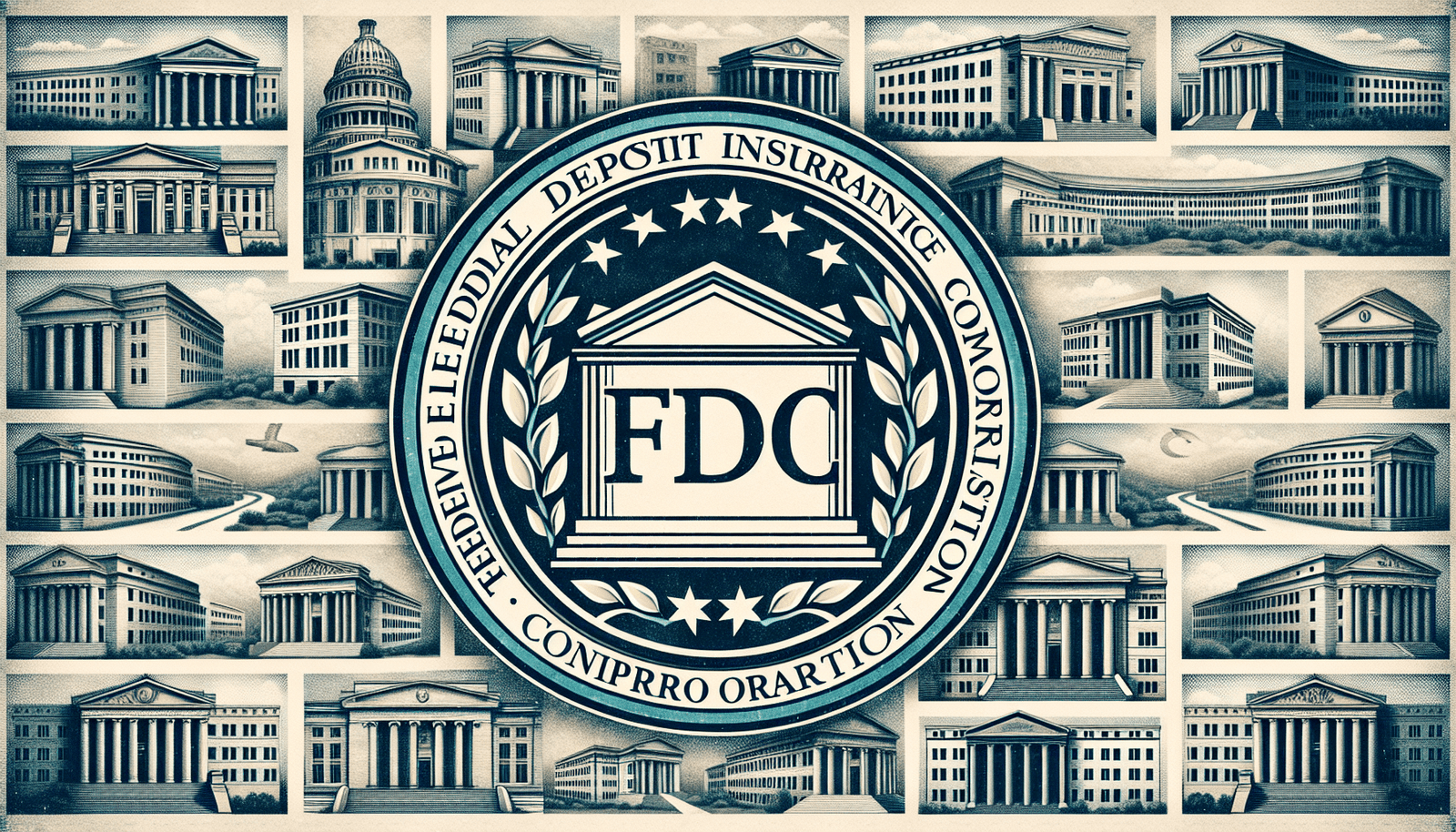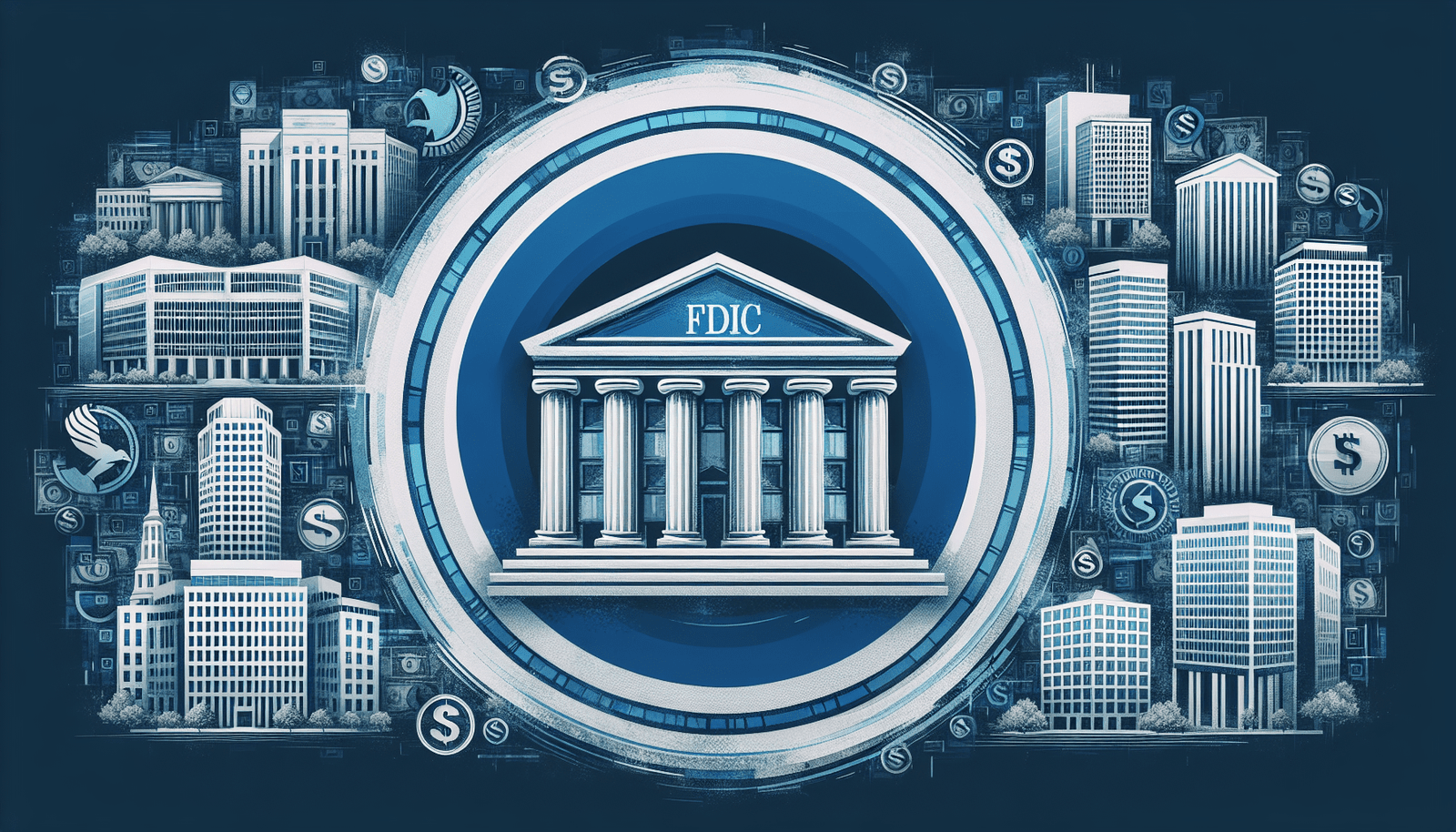
Donning my analytical hat, I’m all set to guide you through the tricky terrains of the ‘FDIC Problem Bank List 2023.’ This year, the list brought its fair share of surprises, a mix of new and familiar financial institutions landing themselves in hot water. Get ready, folks, as I take you along this roller-coaster journey across the complex world of banks and finance, exploring what went wrong with these trouble-makers. Bear with me, and I promise to make this financial ride as engaging, enlightening, and enjoyable as possible.

The Concept of FDIC Problem Bank List
Hello, friends! Today, I’m here to discuss an essential topic related to our banking sector – the FDIC Problem Bank List. It’s quite an interesting subject that many people overlook, despite its significant implications.
Understanding FDIC problem bank
FDIC stands for Federal Deposit Insurance Corporation, which is an independent agency of the United States government. It aims to protect depositors by providing insurance coverage for their funds in event of bank failures. A problem bank, as defined by FDIC, is a financial institution that poses a risk to the Deposit Insurance Fund. This could be due to a variety of issues, including insolvency, poor financial metrics, regulatory breaches, or a combination of these factors.
Purpose of FDIC problem bank list
FDIC maintains a Problem Bank List, a confidential roster that identifies potential trouble spots in the banking industry. The purpose of this list is two-fold. Firstly, it serves to monitor the health of these troubled banks closely. Secondly, it acts as a warning system for FDIC, enabling the agency to take timely action to protect the depositors’ interests.
Approach Towards Problem Bank Identification
Now that we understand what an FDIC problem bank is, let’s dive a little deeper into how these banks are identified.
Key criteria to identify problem banks
Identification of problem banks is based on specific criteria. These include financial ratios, adherence to regulatory measures, quality of assets and management, earnings, and market information. Any negative variation in these metrics might signal that a bank is facing trouble.
Process and importance of bank examination
The process of identifying problem banks largely relies on bank examinations. These assessments are an in-depth review of the bank’s operations, including management performance, financial condition, and compliance with laws. The outcomes of these examinations are vital to ensure the stability of the banking sector and protect consumers like us.
Evolution of FDIC Problem Bank List
One of the fascinating aspects of the FDIC Problem Bank List is how it evolves and changes over time.
Progression over the years
Over the years, the number of banks on the problem list has fluctuated greatly. It typically increases during economic downturns, as more banks face difficulties, and decreases as the economy recovers and banks regain their health.
Why banks are added or removed off the list
Banks can get added to the list when they encounter financial or operational problems that endanger their survival. On the other hand, they can be removed once the issues are resolved, and they’re back on sound financial footing. Sometimes, if a failing bank is acquired by a healthier one, it can also get taken off the list.
Composition of FDIC Problem Bank List 2023
Let’s take a look at the composition of the Problem Bank List for the year 2023.
Number of problem banks in 2023
In 2023, the number of problem banks was reportedly quite significant. While we can’t disclose the exact number due to confidentiality reasons, the tally was a clear reminder that the banking sector still experiences hurdles.
Predominant kind of banks on the list
The list is generally dominated by smaller, community-based banks. The reason being, these banks often have less diversified portfolios and may struggle more with management and compliance issues compared to their larger counterparts.
Analysis of geographical distribution of the banks
The geographical distribution of the problem banks in 2023 was varied, with underperforming banks located across various states. It showed that banking difficulties could rise in any region and are not confined to any specific geographical area.

Inclusion of Major Banks in the 2023 List
Interestingly, major banks were also spotted on the 2023 list.
Notable inclusions
Without naming any names, some notable banks with national and even international operations marked their presence on the list, causing quite a stir in the industry.
Background check of these major banks
These major banks have a pretty solid background and have historically been considered stable. Their inclusion on the list was rather unexpected and revealed how any bank could face problems, regardless of its size or reputation.
Reasons for their inclusion
Various reasons contributed to their inclusion in the list. This included weak financial performance, management issues, or non-compliance with regulatory norms. It serves as a reminder for all banks to consistently monitor their operations and adherence to regulatory norms.
Financial Impact of the Problem Bank Status
The status of being a problem bank carries severe financial implications.
Effects on the problem banks’ business
Once tagged as a problem bank, the institution might face difficulties in securing funds, and it might see an outpour of existing customers. Their reputation can also take a hit, putting them at a competitive disadvantage.
Impact on national and global economy
On a broader scale, a significant number of problem banks can destabilize the national economy. If major banks are involved, it can potentially ripple into the global economy as well.
Potential risks for stakeholders
The stakeholders of the problem banks, including employees, shareholders, and creditors, can also face risks. This can range from job loss, value depreciation, to potential default on payments.
Implications for Depositors and Investors
Now, you might wonder how it affects you, either as a depositor or an investor.
Risks associated with problem banks for depositors
For depositors, problem banks pose a risk to their funds. While FDIC insurance protects up to $250,000, any amount above that could be at risk if a bank fails.
Understanding how investors are affected
From an investor’s perspective, problem banks are risky bets. Possible financial instability and reputation damage can lead to a fall in the bank’s stock value, potentially leading to significant losses.
Ways to strategically safeguard their interests
The best way to safeguard one’s interests is by staying informed. Keep track of FDIC updates, bank ratings, and financial news. Try to diversify your investments and deposits to minimize risk exposure.
Role of FDIC’s Risk Management Program
In terms of risk management, FDIC has got us covered!
Aims and functions of the Risk Management Program
FDIC’s Risk Management Program aims to minimize the impact of bank failures and protect the depositors. It does so by effective supervision and, when necessary, prompt corrective action on problem banks.
Its role in monitoring problem banks
The program plays a crucial role in monitoring problem banks. Regular examinations, financial analysis, and on-site inspections ensure early detection and mitigation of bank problems.
Effectiveness in managing risks with problem bank scenario
Although the Risk Management Program may not prevent banks from experiencing trouble, its effectiveness in managing risk can be seen through the decrease in the frequency of bank failures. It’s an essential tool in maintaining the stability of our banking system.
Comparative Analysis with Previous Years
Drawing a comparison with previous years can give us a better understanding of the current scenario.
Comparison with 2022’s problem bank list
Comparing with the 2022 list, there were several new entries in 2023. While some banks improved and made their exit, a few, unfortunately, slipped into the problem zone.
Identifying patterns and trends
Through the comparison, some trends and patterns come to light. For instance, economic downturns often result in a rise in problem banks. In contrast, economic recovery periods see a decline in the number.
Important insights from the comparison
One critical insight from the comparison is that no bank is immune to problems. Regardless of size, location, or reputation, any bank can potentially face difficulties and land on the list.
Future Predictions for FDIC Problem Bank List
Looking ahead, let’s discuss some predictions for the FDIC Problem Bank list.
Projections for FDIC problem bank list in 2024
While it’s challenging to make precise forecasts, we can expect the list to continue evolving. The changes will largely depend on the economic climate and regulatory compliance of banks.
Factors that might influence future trends
Factors influencing future trends may include economic development, monetary policy, banking practices, and changes in regulatory norms. Significant shifts in any of these could drastically alter the landscape of the problem bank list.
Recommendations for banks to avoid being listed
Although no foolproof strategy can prevent a bank from ending up on the list, certain steps can help. These include maintaining strong financial management, ensuring compliance with regulations, diversifying banking operations to absorb shocks better, and keeping a transparent communication channel with stakeholders.
I hope you found this article informative. Remember, staying informed and vigilant is key. Happy banking, friends!
Leave a Reply